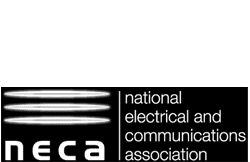The Main Role of a Residual Current Device and Why It Should Be Tested Regularly
11 October 2022Commercial and industrial buildings utilise a lot of equipment and machines to carry out their daily operations. And with the abundance of these things, they should maximise devices that can retain their overall safety.
One of the devices they must install is a residual current device. A residual current device, or RCD, is a device that is meant to switch off electricity automatically whenever a fault occurs. This function prevents people from getting a fatal electric shock as they touch a bare wire or other live lines. This device can also protect the said buildings from electrical fires. For some property owners, this device works more effectively than ordinary fuses, circuit breakers, and other similar electrical protection devices.
RCD Working Principles and Main Types
RCD, as mentioned earlier, works by switching off the power automatically whenever a fault occurs. This device can carry out the said function as it constantly monitors the electric current that flows through the circuits it is meant to protect. Once the RCD detects electricity moving into an unintended path, it will promptly switch the circuit off, preventing anyone from getting electrocuted. This quick response likewise prevents electrical systems from getting on fire.
Property owners these days can maximise different types of RCDs. These types include fixed RCDs, socket-outlet RCDs, and portable RCDs. Fixed RCDs are normally installed in the consumer unit, providing maximum protection to circuits. They are effective in protecting all the wiring and the sockets on a circuit. They can even protect appliances and machines that are connected to electrical systems.
Socket-outlet RCDs, alternatively, are built into socket-outlets, protecting the person in contact with the connected equipment. Portable RCDs, ultimately, is plugged into any standard socket outlet, which can also protect anyone who may be in contact with the connected equipment, including its lead.
The Importance of Regular RCD Testing
Given the significance of RCDs, property owners like you should subject them to regular testing. RCD testing can be done by safely tripping the RCDs, and assessing whether they can operate quickly during faults or not. Australian standards have provided the optimal trip times for various RCDs, providing competent technicians with the needed information when checking their conditions. If the RCDs tend to trip more quickly, the smaller the electric shock one may sustain.
The previous type of RCD testing is known as safety switch testing. But another type of RCD testing that technicians can carry out is push-button testing. Push button testing is carried out to check if the RCDs can detect an imbalance and subsequently trip due to the existence of an earth leakage. As the test button is pressed, functional RCDs should be able to turn off the switch during an earth leakage.
Regular testing of RCDs should be done following AS/NZS 3760:2010, ensuring that RCDs can quickly respond to fault issues. Businesses are likewise required to have their RCDs tested before they can operate. This type of testing, however, can only be valid if it has been conducted by competent technicians or inspectors.
To have your RCDs inspected, you can contact us at Electroscope.
Optimized by: Netwizard SEO


